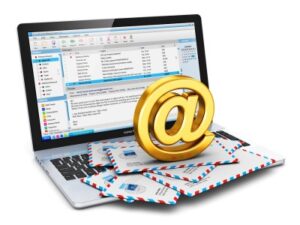Organizing e-mail
Most people now routinely send and receive lots of messages every day and as a result, their inbox can get very quickly overloaded with hundreds of personal and work-related emails. Setting aside some time to organize your emails will ensure information can be found quickly and easily and is stored securely.
Why should I organize my email?
Apart from the obvious frustration and time wasted looking for that email you remember sending to someone last month, email is increasingly used to store important documents and data, often with information related to the attachments within the email itself. Without the proper controls in place, they can often be deleted by mistake.

What are the first steps to organizing my email?
If your emails have got out of control there are a number of immediate steps you can take to control the problem:
- Archive your old emails. If you have hundreds of emails hanging around from more than a month ago, move them into a new folder called something like “Archive”. You can always come back to these at a later date.
- Now go through your remaining inbox email by email. If an email is useless, delete it. If not, ask yourself: is it “active” – is there a specific action you, or someone else, need to take or do you just vaguely think it is worth keeping? If the latter, move it to the archive.
How can I ensure my emails remain organized?
Here are some general tips to ensure your email remains organized in the long term:
- Delete emails you do not need. Remove any trivial or old messages from your inbox and sent items on a regular (ideally daily) basis.
- Use folders to store messages. Establish a structured file directory by subject, activity, or project.
- Separate personal emails. Set up a separate folder for these. Ideally, you should not receive any personal emails to your work email account.
- Limit the use of attachments. Use alternative and more secure methods to exchange data where possible (see ‘data sharing’ for options). If attachments are used, exercise version control and save important attachments to other places, such as a network drive.
Source
